Fix it: Stihl 010 AV Chainsaw
Chainsaws are amazing. Their engines spin at more than 150 revolutions per second. (Yes, per second, not per minute!) That’s about the same speed as the wings of a bee. Pretty darn impressive. Even more impressive is the carburetor (the thing that controls fuel flow). Our machine has a carburetor about the size of an ice cube, yet it has an embedded fuel pump. Surprisingly, the fuel pump is just a small sheet of cleverly-shaped plastic that flaps at the speed of the engine, more than 150 times per second. The fuel is pumped by a sheet of plastic! And this saw has run for 40 years! Wow, kudos to the engineers that design and build these things.
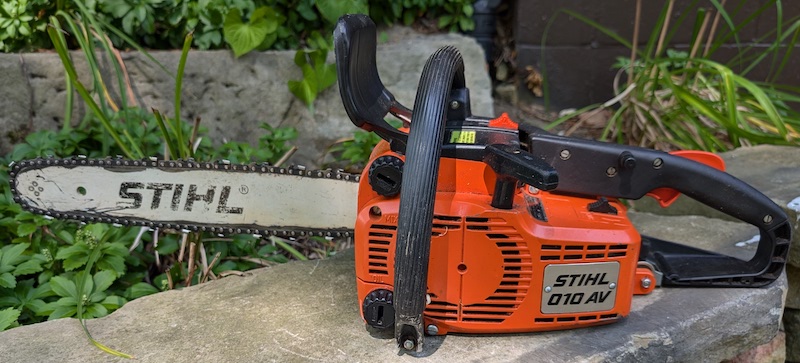
Figure 1: Stihl 010 AV with 16" bar in great shape, but hard to start.
We have a wooded property that requires regular yard maintenance. We cleanup sticks, cut large branches, and occasionally remove trees. We bought a Roto-Hoe shredder to process the small debris. But for larger branches and trees, we have two small Stihl chainsaws. We don’t use a chainsaw often, but when you need it, you need it.
More than 40 years ago, my family bought a Stihl 010 AV (anti-vibration). It provided many years of reliable, lite use. Stihl calls this an “occasional user saw.” It’s an affordable homeowner saw, not a professional saw. About 5 years ago, the saw developed an attitude–it became hard to start. It required a mysterious combination of choking, spraying starter fluid, cleaning the spark plug, and endless yanking. It wasn’t what you’d call reliable, so we bought another Stihl “occasional user saw” to replace it. But apart from being hard to start, the old saw was still in great shape. Over the 40 years, we truly used it occasionally.
Carburetor
Since we were clearing years of debris from our ravine, and since most things are indeed fixable, now seemed like a good opportunity to invest a little time in the old saw. And when an engine is old and seldom used, the carburetor is a good place to start. Because the saw itself is pretty small, the carburetor is also small and self-contained.

Figure 2: Walbro WA-99 carburetor. Small and easily removed.
Apart from being gunked-up with wood chips, the internals of the saw look very good. An air compressor quickly clears wood chips, and the carburetor is out and ready to rebuild. Like other popular machines, the parts for Stihl are easy to find and affordable. We ordered a $15 Walbro K10-WAT rebuild kit. A new carburetor is $67, so a $15 rebuild kit is way more attractive.
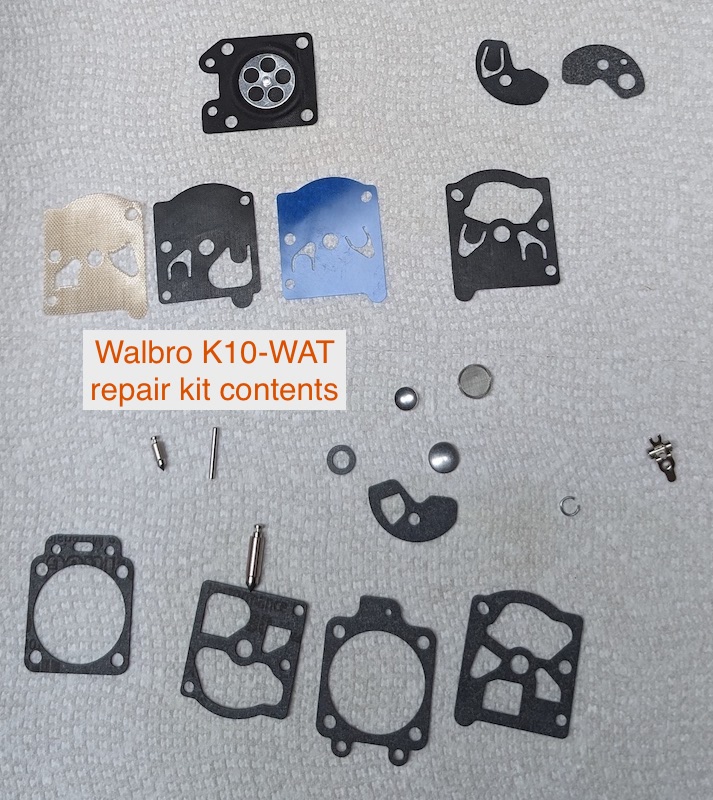
Figure 3: Walbro K10-WAT carburetor rebuild kit, $15.
The rebuild kit comes with 21 parts. We only need 6. The two most critical parts are the fuel pump and the diaphragm. As shown in the picture, the fuel pump is just a black sheet of plastic. The two rounded tabs on the fuel pump are check valves–as one opens the other closes. Those things buzz up and down like the wings of an insect, more than 150 times per second. Crazy.
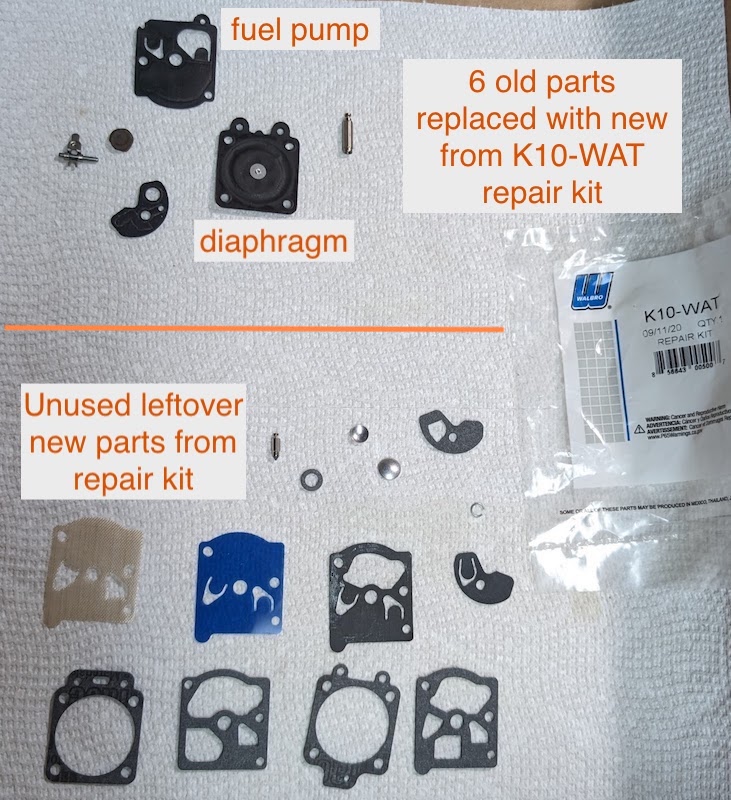
Figure 4: 6 of 21 parts replaced. Fuel pump and diaphragm are most important.
Comparing the old and new fuel pumps, the old plastic is flimsy and curled. The new plastic is crisp and flat. This is probably the main reason the chainsaw is hard to start.
The springs, pins, and widgets inside the carburetor are small and delicate. The spring, in particular, is easy to lose and hard to find.
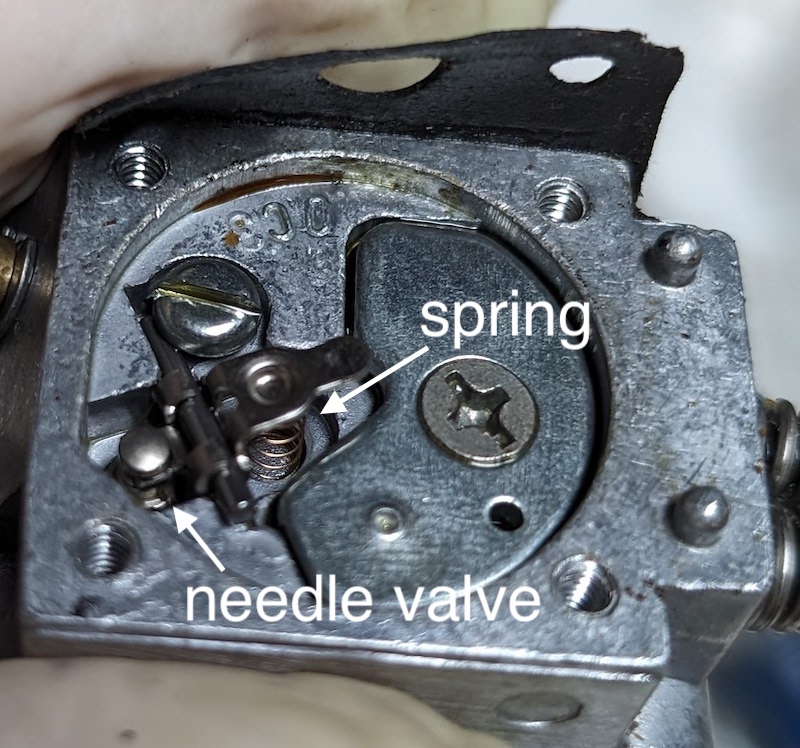
Figure 5: Carburetor spring, needle value, and widgets.
With a little patience and care, the carburetor rebuild is done in about 45 minutes.
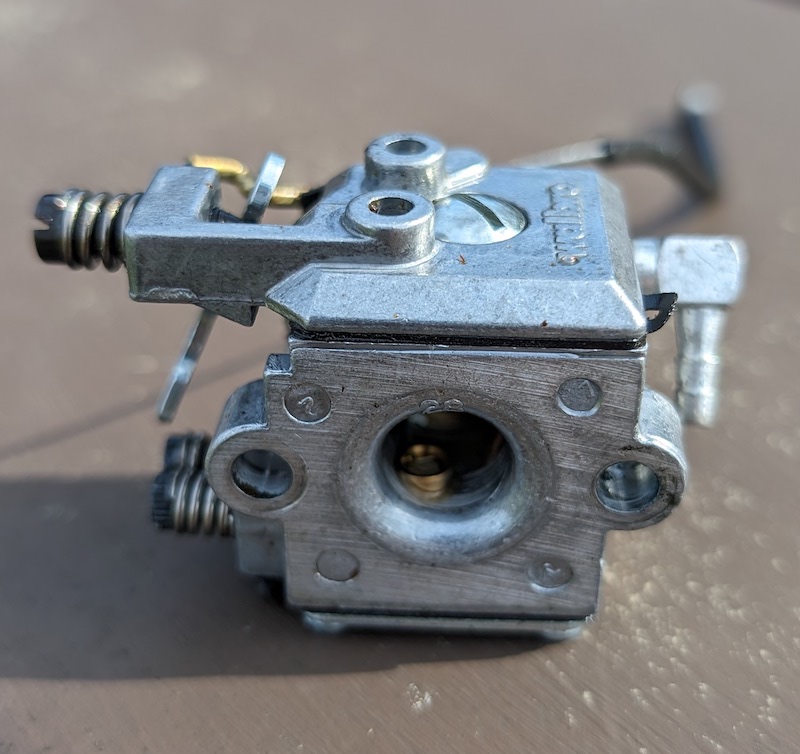
Figure 6: Rebuilt carburetor. Ready to install.
After installing the carburetor back in the saw, it’s dark, chilly, and late on a March night. The neighbors are surely sleeping. Now’s probably a good time to step outside and see how it runs. It doesn’t start on the first pull, but it does fire. On the second pull, it’s running a little rough, but it’s running. And with a quick adjustment to the low-speed screw, it’s running like new.
Over the coming weeks, we do a lot of yard cleanup. The saw starts easily and runs strong. The chain is shiny with oil and cutting well. That’s a successful rebuild.
Chain sprocket
In the recent past, an arborist took down several large, risky trees in our ravine, but they left 20 inch diameter, 6 foot tall stumps because, well, it’s just a ravine. As part of our cleanup, we cut those stumps closer to the ground. Our Stihl 010 AV is not intended to cut trees this large, but it nonetheless did the job. Because those stumps are large, and because we hit some dirt and rocks while cutting, the chain needed sharpening. When we installed the newly sharpened chain, something strange happened.
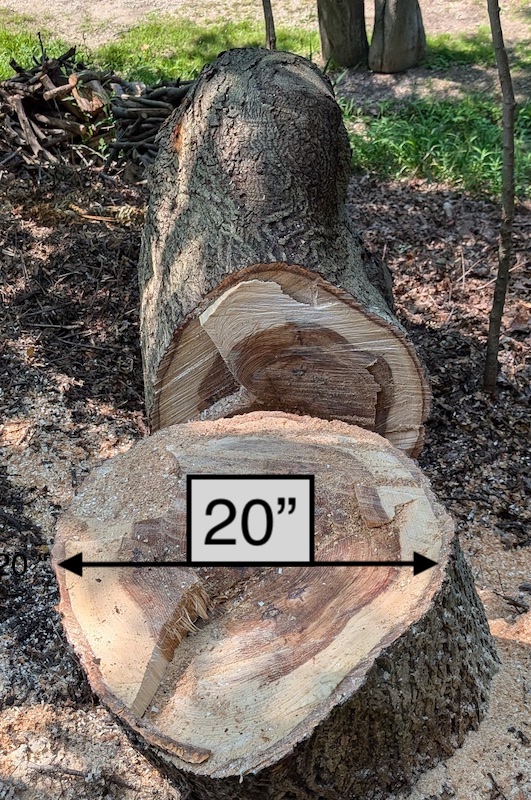
Figure 7: 20" stump cut with 16" saw. That’s hard on the saw.
It’s always been easy to replace the chain on this saw: Loosen the chain tension, replace the chain, tighten the chain tension. Easy. But not anymore. After tensioning the chain, and spinning the chain by hand, the chain became ridiculously tight. What? How is that possible? After some investigation, we find that those are the symptoms of a worn chain sprocket. The chain sprocket is the gear that uses the engine power to spin the chain.
In the picture below, the grooves in our worn chain sprocket are so perfect that they seem to have been machined into the sprocket, like maybe the chain is intended to ride in those grooves. Nope, those are wear grooves. A new sprocket has no grooves at all.
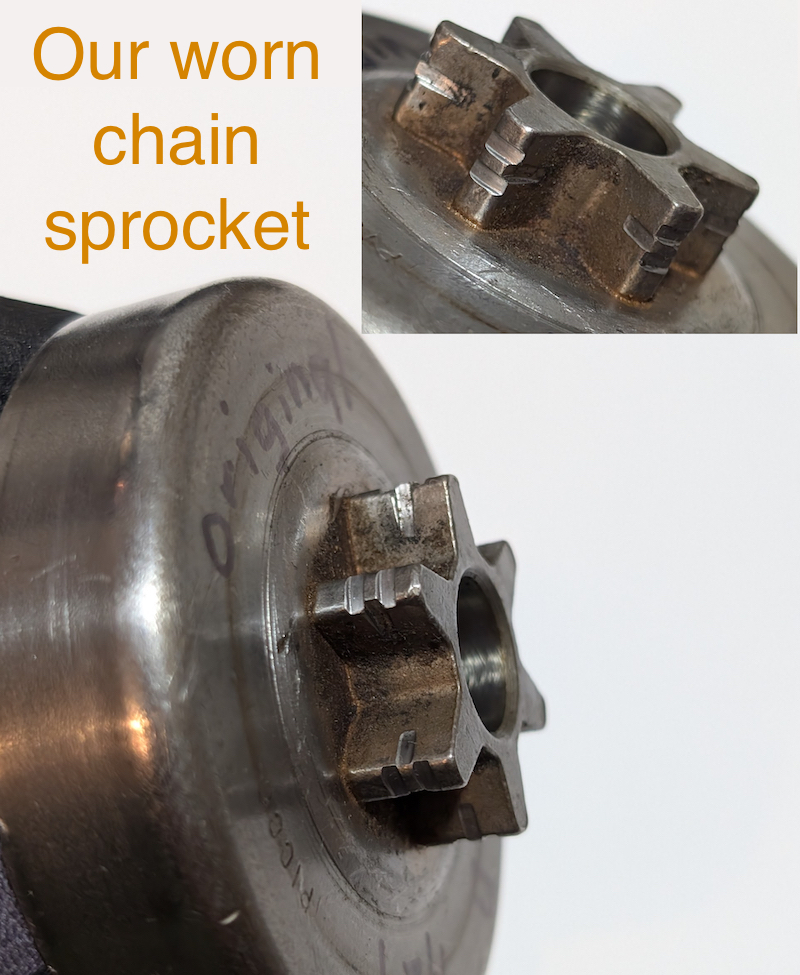
Figure 8: Wear grooves in chain sprocket. Should be smooth.
We looked in the owner’s manual, which is helpful. The manual shows a picture of the sprocket, and it has the perfectly machined grooves, just like ours. Ah, the sprocket is intended to have those grooves. Nope. The caption on the picture says “Worn chain sprocket.” The manual suggests replacing the chain sprocket with every two chains. Huh? Our sprocket is probably the original–never replaced. The problem with the grooves is that the chain tension changes dramatically depending on whether the chain is in the groove or not in the groove. And either a super-tight or super-loose chain is dangerous.
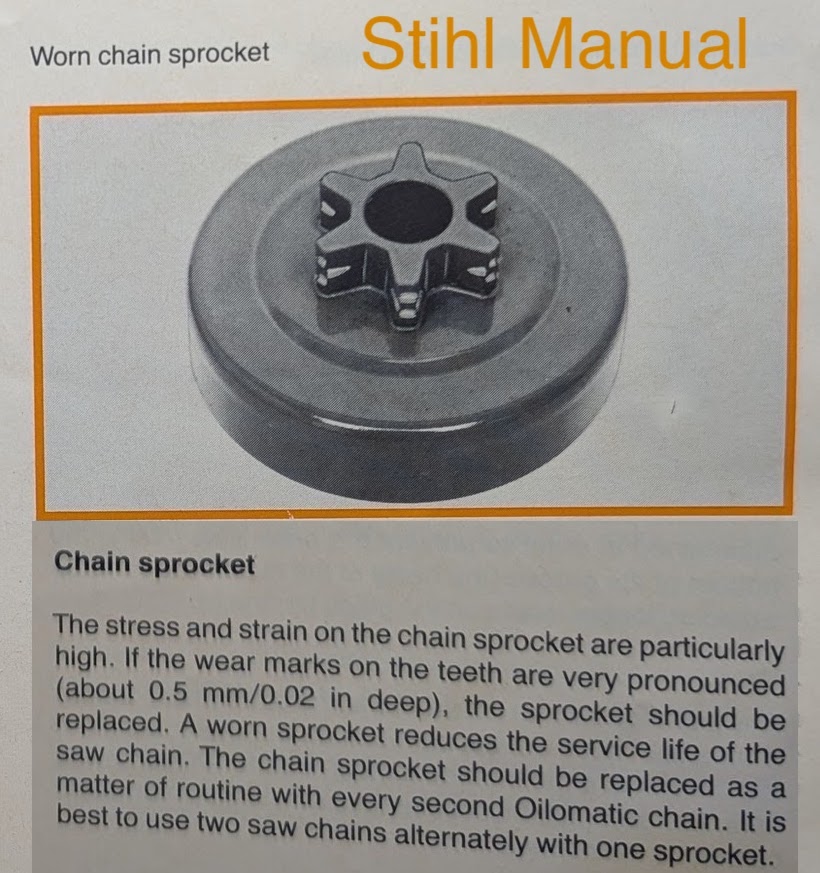
Figure 9: Manual clearly shows wear grooves.
Because Stihl chainsaws are so prevalent, parts are easy to find. We bought a new Stihl chain sprocket for $32. The sprocket has 6 teeth and 3/8" Picco-pitch. Installing the sprocket was tricky. Two special tools are needed: One to prevent the engine from rotating and one to loosen and unscrew the clutch from the engine shaft. Rather than buying and waiting for tools to arrive, we visited YouTube. The engine can be locked in place by stuffing a thin rope through the spark plug hole, filling up the cylinder. And we have a flange wrench from an angle grinder that’s similar to the required clutch tool. With those two compromises, the clutch spins easily off the shaft, the old chain sprocket is off, and the new chain sprocket is back on.
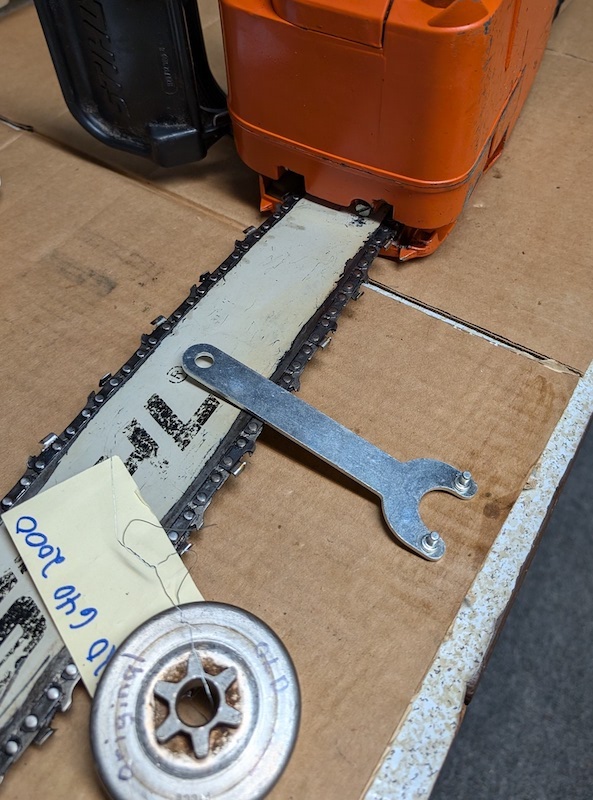
Figure 10: Flange wrench from angle grinder removes clutch.
The interaction between the clutch and chain sprocket is interesting. The clutch is attached to the engine shaft and therefore spins at the speed of the engine. The clutch spins inside the sprocket and has two heavy weights hanging from thinner arms (see photo). When the clutch spins at high speed, the weights move away from the center and contact the chain sprocket. The friction between the clutch and the chain sprocket is what spins the chain and cuts wood. It’s surprising how well this works.
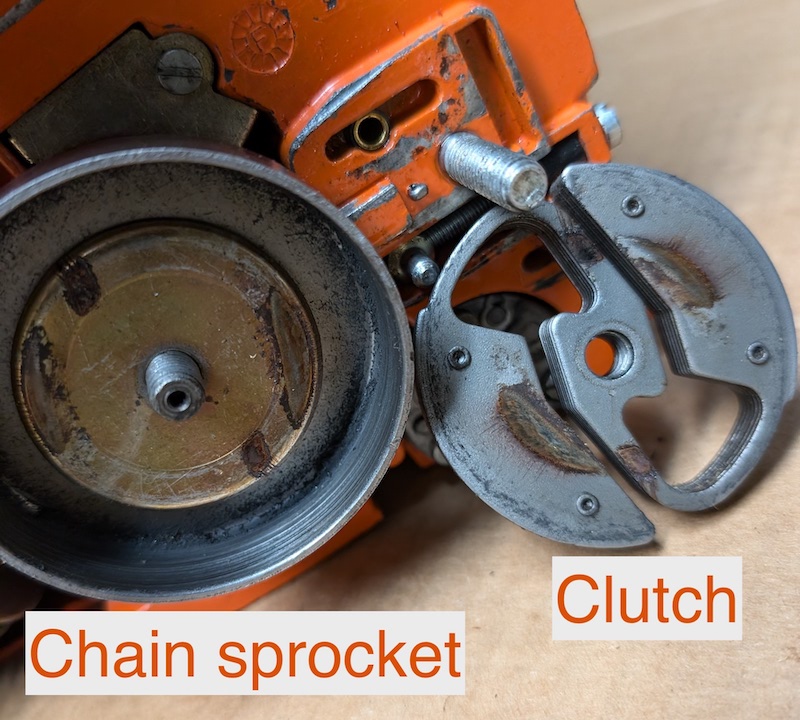
Figure 11: Clutch and sprocket lock together to drive chain.
It’s also very cool to see how perfectly the chain fits in the sprocket. The chain is straight along the bar, but forms a perfect match for the sprocket gears when it rotates around the shaft. This was no accident.
After reassembling the saw and tensioning the chain, the chain tension is unchanged when the chain is spun by hand. After running the saw for a minute, the chain tension is still unchanged. Perfect. That’s the way it’s intended to work.
Between the Roto-Hoe shredder and the Stihl chainsaw, we cleanup a massive amount of debris and the ravine is shaping-up.